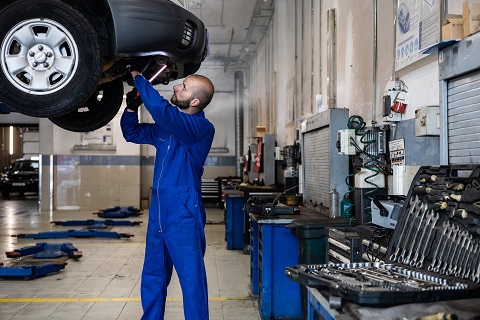
One of the best ways to ensure that you get as many miles for your buck as possible when buying a car is to keep up with maintenance tasks. Regular maintenance can help detect possible defects and prevent major issues from occurring down the line. Consider maintenance as self-care for your car. Below, we answer some of car owners’ most common maintenance questions.
Should You Warm Up Your Car Before Driving?

There are two reasons why you might want to warm up your car before heading out on your journey. The first is to lubricate the engine, and the second is to warm it up. Luckily, modern car engines make quick work of the lubrication part. So if you’re not in a frosty part of the world, you should be good to go in about a minute.
For colder climates, you might want to spend a bit longer just to get things warmed up. That doesn’t mean you have to let the car idle for an extended period. It simply means ensuring that the car is warmed up before increasing the revs. It only takes a few minutes for this to happen, whereas idling might make this process take up to 20 minutes.
How Often Should You Replace Tires?
Many factors affect how often you need to replace your tires. These include the average mileage, the condition of the roads, your driving style, and the quality and type of tires. Some tires need to be replaced every 36,000, while others have enough tread to last up to 75,000 miles.
The average amount of time tires last is six years. While some may last longer, it’s recommended that you don’t use tires beyond the 10-year mark. This is because rubber has the potential to become brittle.
Some of the signs your car’s tires need replacing are:
- The tread is near or under 2/32nds of an inch,
- You notice bald spots on the tires.
- There’s visible tire damage.
- Your car aquaplanes on wet road surfaces.
- The tires are bulging.
- The tires lose air even after repairs.
How Often Should You Replace Brake Pads?
The wear on brake pads increases if your daily commute includes high traffic. In cities and towns with lots of rush hour traffic, you should get about 30,000 miles out of your brakes. If you live in the countryside and don’t experience significant traffic, this figure can go to 80,000 miles or higher.
It’s worth noting that cars that don’t get used very often should have their tires and brakes inspected more regularly, Over time, brakes and tires can become brittle, even if they still seem new. If you experience any of the following issues, you may want to have your tires or brakes checked out:
Noise
Squealing brakes indicate that there might be a problem. The sound happens when the brake pad no longer provides cushioning, which results in metal grating against metal. Sometimes, brakes may squeal in colder climates. However, if the noise doesn’t stop once the brakes have warmed up, you may want to have it checked out by a professional.
Veering When You Apply the Brakes
Brake pads don’t always wear don’t evenly. When this happens, braking might cause the car to veer.
Shuddering
Shuddering and shaking can happen when the brakes are worn down. This happens when the brake pads are worn in patches and the disc doesn’t connect with the surface area it normally would.
Leaks
Brake fluid is an important component in the braking process. It creates hydraulic pressure against the brake calipers, which causes them to close around the disc. Without this pressure, the brakes simply can’t close, rendering the brakes ineffective. Brake fluid leaks should be treated very seriously.
Are Oil Changes Necessary Between Car Services?
Oil changes between car services become necessary when you rack up a significant amount of mileage in a short period. Car service intervals are usually between 7,500 miles and 10,000 miles. However, many car manufacturers recommend changing the engine oil every 3,000 miles. This means you might have to book oil changes between services.
Unfortunately, it’s not always easy to tell whether a car needs an oil change. Sometimes, the dirty oil has already started a damaging journey through the car’s engine. Some early signs of dirty oil include:
Dirty Oil
Checking the oil is something you can do in just a few minutes when you’re filling gas. Simply pop the hood and check the oil dipstick. If you can still see the dipstick through the oil coating, it should still be good. However, if it’s dark and sludgy, book your oil change appointment.
Fuel Efficiency
Dirty oil affects the engine’s efficiency, which means that it uses more fuel to get the job done. This, in turn, can lead to high gas consumption.
The Check Oil Light
Modern cars have several sensors throughout the car to alert you to possible engine problems. The oil check light will indicate that there’s a problem with the oil. Instead of just topping the oil up, it’s important to check whether the quality of the oil that’s already in the car is still good quality.
Smell
An oil smell in your car can indicate an oil leak. It may also suggest that the car is running too hot and the oil is not providing enough lubrication.
Engine Knocking
Oil provides lubrication, which facilitates the smooth movement of engine parts. Without lubrication, the engine experiences friction. Over time, the friction becomes so bad that the engine components start breaking apart, and this process can be noisy.
Servicing Done Right
At Bountiful Mazda, we know that proper car maintenance can add years to your car’s life span. Whether it’s time for a scheduled service or you need some maintenance done in between services, give us a call for a booking. Our comprehensive service offering includes routine maintenance, tire service, Mazda pure oil changes, and genuine Mazda brakes. We have a fully stocked parts center to ensure that we can meet all your service and maintenance requests.


